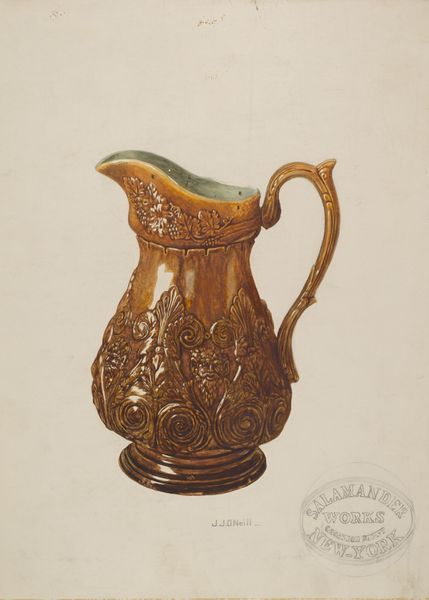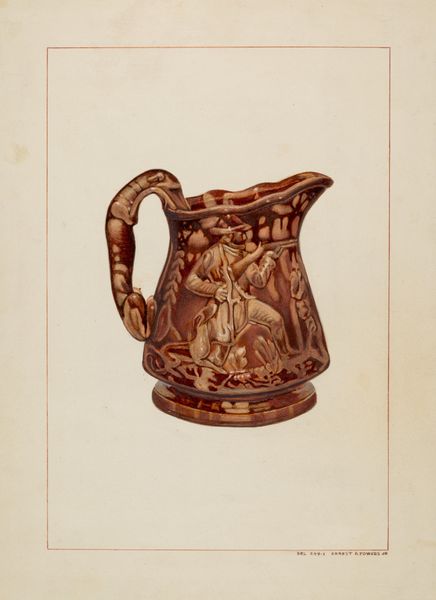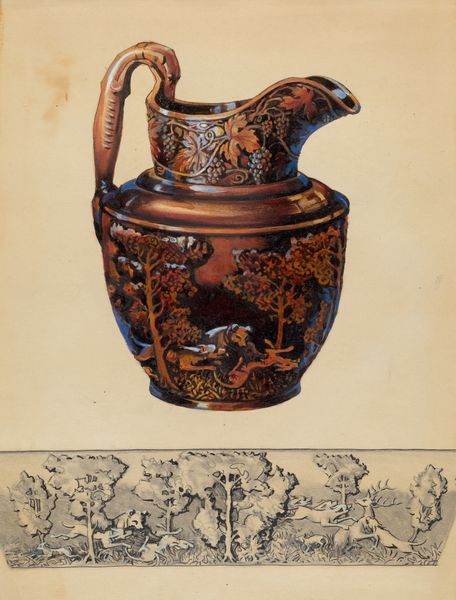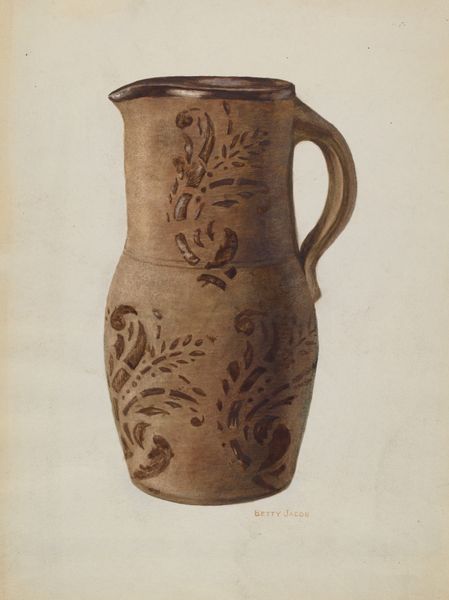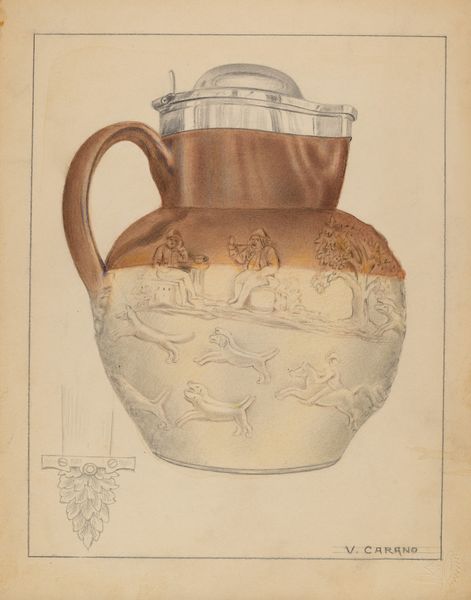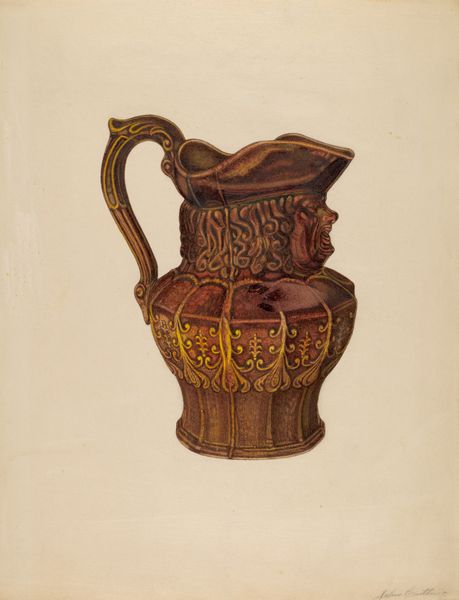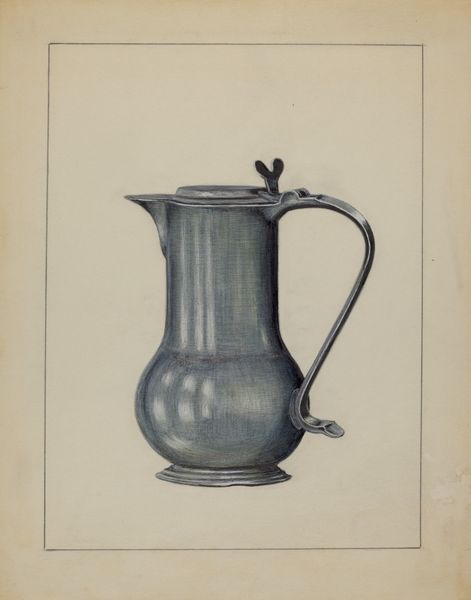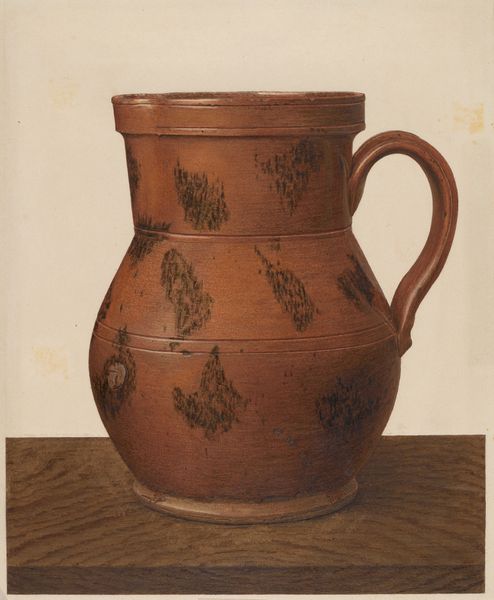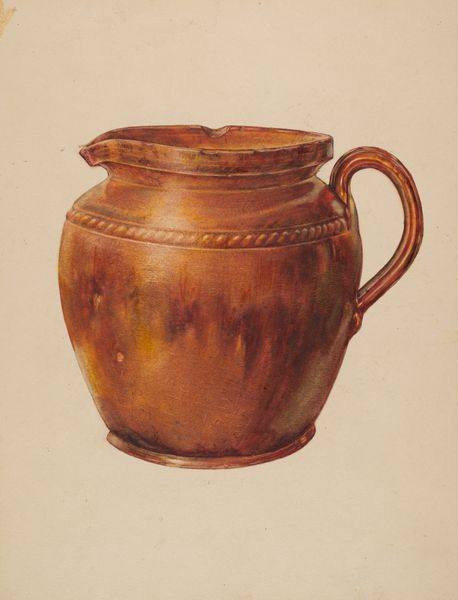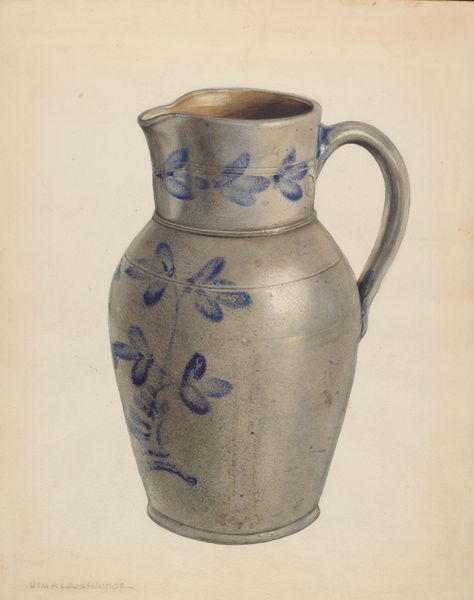
drawing, watercolor
#
drawing
#
charcoal drawing
#
oil painting
#
watercolor
#
watercolour illustration
#
decorative-art
#
watercolor
Dimensions: overall: 27.3 x 21.5 cm (10 3/4 x 8 7/16 in.) Original IAD Object: 8 1/4" High 5 1/16" Dia(base)
Copyright: National Gallery of Art: CC0 1.0
Editor: So, this is a watercolor drawing of a pitcher, made by John Fisk in 1937. It’s really striking how ornate the design is, almost like a classical relief cast in dark chocolate. What do you see in this piece? Curator: I see a material object, certainly. But I also see encoded within this pitcher a silent commentary on production, labor, and even class. The meticulous detail, seemingly celebrating craft, also points to the exploitative realities often underpinning decorative arts in the 1930s. Who would have produced such an ornate object and under what conditions? The date situates this firmly within the Depression era. Editor: That's an interesting point. The craftsmanship does feel almost… romanticized. The idyllic scenes etched into the pitcher's surface now read with an odd dissonance, a jarring juxtaposition of leisure and luxury amidst economic hardship. Curator: Precisely! It's critical to question who benefits from these depictions, from this crafted beauty. The circular stamp at the top with the text "E. Warner, Pottery, West Troy, NY" indicates provenance, which then opens to a whole new discourse around regional industry and consumption patterns during this era. How does Fisk, as an artist, engage with this narrative of localized creation versus broader economic realities? Editor: I hadn't thought about the economic backdrop at all. So much hidden beneath a seemingly simple pitcher! Curator: Yes, and consider Fisk's choice of rendering this in watercolor. What does it mean to represent a presumably solid, functional object in such a fluid, almost ephemeral medium? Is it a statement about the fleeting nature of beauty, or even prosperity? Editor: Thinking about the economic hardship… perhaps the use of watercolor suggests a certain fragility, or precarity? It’s less permanent, less 'real' than the solid, weighty pitcher it represents. Thanks, this has really changed how I look at it. Curator: And it reminds us that art is never truly 'still life' – it is always engaged with a vibrant network of histories.
Comments
No comments
Be the first to comment and join the conversation on the ultimate creative platform.
